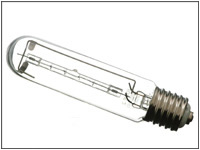
You are here: Home >> Encyclopedia of Light >> Sources of Light
Visible light covers a very small portion on the whole electromagnetic spectrum. Human eye can perceive electromagnetic radiation which lies between 400 and 700 nm (nanometres). The basic source of visible light is the sun of course, but we have invented many other devices in order not only to see in the dark and generally to meet our needs, but also just for fun.
Here there some typical devices (although they are so many) which provide us visible light.
 Fisrt of all in order to conceive the way fluorescent lamps work we should have again the image of an atom in our minds and how a photon is produced.
Fisrt of all in order to conceive the way fluorescent lamps work we should have again the image of an atom in our minds and how a photon is produced.
The central element in a fluorescent lamp is a sealed glass tube. The tube contains a small bit of mercury and an inert gas, typically argon, kept under very low pressure. The tube also contains a phosphor powder, coated along the inside of the glass. The electrons in mercury atoms are arranged in such a way that when the lamp is on, they mostly release light photons in the ultraviolet wavelength range. Our eyes don't register ultraviolet photons, so this sort of light needs to be converted into visible light to illuminate the lamp.
This is where the tube's phosphor powder coating comes in. Phosphors are substances that give off light when they are exposed to light. When a photon hits a phosphor atom, one of the phosphor's electrons jumps to a higher energy level and the atom heats up. When the electron falls back to its normal level, it releases energy in the form of another photon. This photon has less energy than the original photon, because some energy was lost as heat. In a fluorescent lamp, the emitted light is in the visible spectrum -- the phosphor gives off white light we can see. Manufacturers can vary the color of the light by using different combinations of phosphors.
For one more time we must have the image of an atom in our minds and the way "things work" there in order to conceive laser. If we assume that we have the basic knowledge about atoms, we can carry on.
How lasers work at the Laboratory of Light
 Although there are many types of lasers, all have certain essential features. In a laser, the lasing medium is "pumped" to get the atoms into an excited state. Typically, very intense flashes of light or electrical discharges pump the lasing medium and create a large collection of excited-state atoms (atoms with higher-energy electrons). It is necessary to have a large collection of atoms in the excited state for the laser to work efficiently. In general, the atoms are excited to a level that is two or three levels above the ground state. This increases the degree of population inversion. The population inversion is the number of atoms in the excited state versus the number in ground state.
Although there are many types of lasers, all have certain essential features. In a laser, the lasing medium is "pumped" to get the atoms into an excited state. Typically, very intense flashes of light or electrical discharges pump the lasing medium and create a large collection of excited-state atoms (atoms with higher-energy electrons). It is necessary to have a large collection of atoms in the excited state for the laser to work efficiently. In general, the atoms are excited to a level that is two or three levels above the ground state. This increases the degree of population inversion. The population inversion is the number of atoms in the excited state versus the number in ground state.
Once the lasing medium is pumped, it contains a collection of atoms with some electrons sitting in excited levels. The excited electrons have energies greater than the more relaxed electrons. Just as the electron absorbed some amount of energy to reach this excited level, it can also release this energy. This emitted energy comes in the form of photons (light energy). The photon emitted has a very specific wavelength (color) that depends on the state of the electron's energy when the photon is released. Two identical atoms with electrons in identical states will release photons with identical wavelengths.